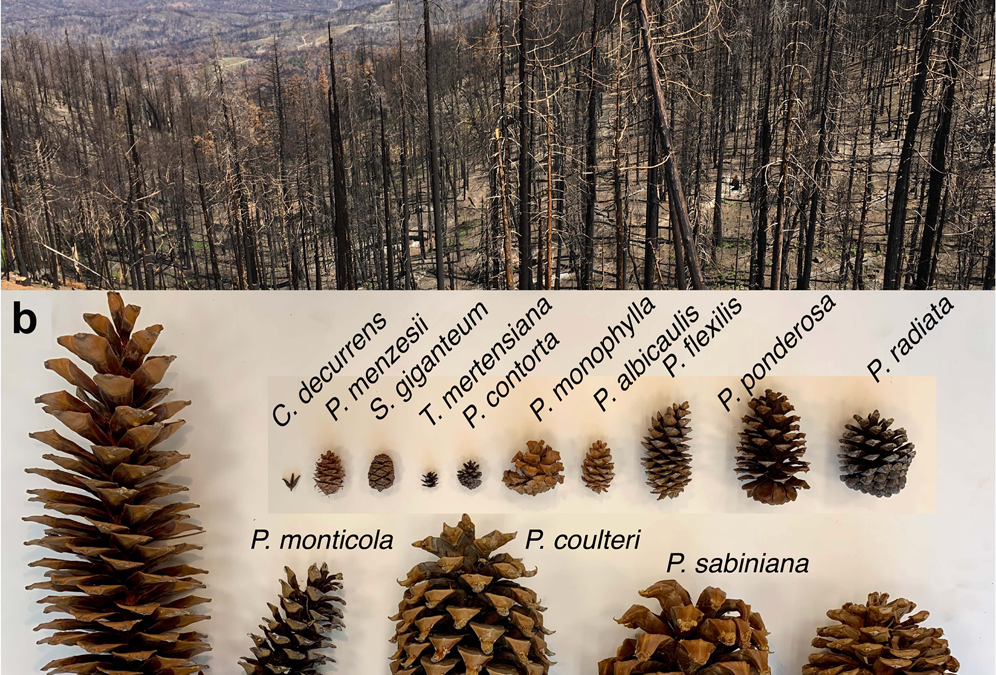Jonathan, William, and colleagues in the Mast Inference and Prediction (MASTIF) Network publish a paper in Nature Communications titled “Limits to reproduction and seed size-number trade-offs that shape forest dominance and future recovery”. Thanks to Tong Qiu and Jim Clark for leading this project!
Figure: Seed production quantifies forest regeneration potential. Regeneration of forests devastated by multi-year drought and fire depend on a vastly diminished seed supply. a Seed production is limited to unburned landscape fragments in the Sierra Nevada mixed conifer zone following 2020 burns at a Masting Inference and Forecasting network (MASTIF) and National Ecological Observatory Network (NEON) site (Shaver Lake, CA). b Total reproduction includes not only seeds, but also defenses, including wood, spines, and resin flow in conifer cones; examples from the heavily burned Sierra Nevada and Coast ranges include Calocedrus decurrens, Pinus albicaulis, P. contorta, P. coulteri, P. flexilis, P. lambertiana, P. monophylla, P. monticola, P. ponderosa, P. radiata, P. sabiniana, Pseudotsuga menzesii, Sequoiadendron giganteum, and Tsuga mertensiana. Mass fractions for seeds to seeds plus cones ranges from 3% for P. radiata, P. contorta, P. coulteri, and P. sabiniana to 61% for C. decurrens. The largest cone in b (Pinus lambertiana) is 46 cm. (Photo credits: James S. Clark and Jordan Luongo).

